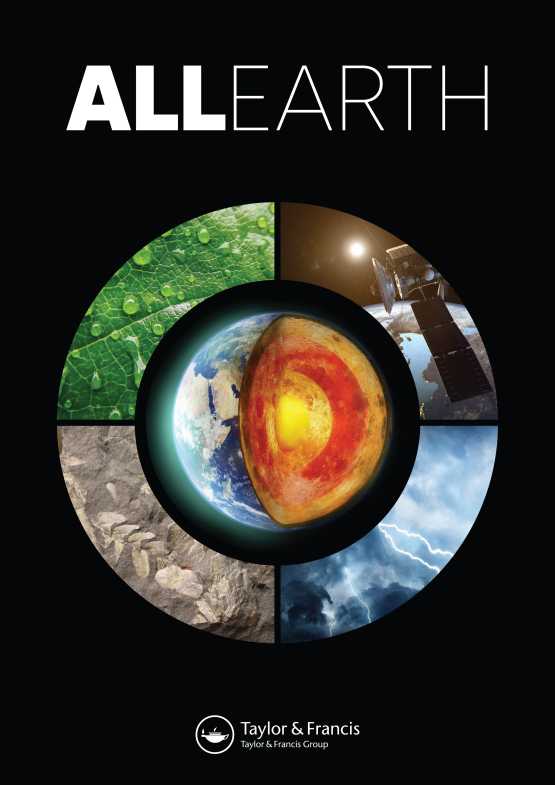Submit a Manuscript to the Journal
All Earth
For an Article Collection on
Evolution of Global and Regional Water Storage and Water Fluxes Under Climate Change: Past, Present, and Future
Manuscript deadline


Article collection guest advisor(s)
Ehsan Forootan,
Aalborg University, Denmark
Vagner Ferreira,
Hohai University, China
Luca Brocca,
Research institute for Geo-Hydrological Protection (IRPI), Italy
Yu Zhang,
Space-Analytics.org
CK Shum,
Ohio State University, USA
Evolution of Global and Regional Water Storage and Water Fluxes Under Climate Change: Past, Present, and Future
Climate change is fundamentally altering the global hydrological cycle. Over the past three decades, the frequency and magnitude of extreme hydrometeorological events, including floods, droughts, and heatwaves, have increased significantly, resulting in substantial damage to lives, ecosystems, and property. Understanding these changes requires multiscale investigation across various spatial domains (from local to global) and temporal ranges (from historical records to future projections).
Comprehensive monitoring of water storage and fluxes demands integration of diverse data sources. While ground-based observations provide critical baseline measurements, emerging remote sensing technologies have revolutionized our capacity to monitor hydrological processes at unprecedented scales. Key satellite missions contributing to our understanding of water storage and fluxes include:
Gravity and Mass Change Measurement
- GRACE/GRACE-FO and future gravity missions: Measuring changes in Earth's gravity field to quantify terrestrial water storage variations at regional to continental scales, ice mass balance, and ocean mass variation (2002-present)
Optical Imaging Systems
- Sentinel-2: Providing high-resolution multispectral imagery for surface water extent mapping and water quality assessment (2015-present)
- Landsat series: Offering the longest continuous space-based record of Earth's surface for tracking long-term changes in water bodies and land use (1972-present)
- MODIS (on Terra and Aqua satellites): Delivering daily observations of vegetation, land surface temperature, snow cover, and atmospheric conditions relevant to evapotranspiration estimation (1999-present)
Radar and Active Systems
- Sentinel-1: Utilizing C-band Synthetic Aperture Radar (SAR) for all-weather monitoring of soil moisture, flood extent, and surface deformation (2014-present)
- SAR missions (ALOS, RADARSAT, etc.): Employing radar technology to capture high-resolution images regardless of weather conditions, particularly valuable for flood detection and soil moisture assessment
- ICESat-2: Using laser altimetry to precisely measure elevations of water bodies, ice sheets, and land surfaces (2018-present)
- SWOT (Surface Water and Ocean Topography): Providing the first global survey of Earth's surface water, observing lakes, rivers, and oceans with unprecedented resolution (launched 2022)
Specialized Hydrological Sensors
- SMAP (Soil Moisture Active Passive): Measuring near-surface soil moisture and freeze-thaw state globally, crucial for drought monitoring and agricultural applications (2015-present)
- GNSS networks (GPS, Galileo, BeiDou, GLONASS,): Beyond PNT (Positioning, Navigation, and Timing), these systems contribute to hydrology through GNSS Reflectometry (GNSS-R) for soil moisture and snow depth assessment, GNSS Radio Occultation (GNSS-RO) for atmospheric water vapor profiling, and measurements of crustal deformation due to hydrological loading
Effective water resource management in a changing climate requires not only monitoring capabilities but also advanced prediction systems. This involves developing robust hydrological models, data assimilation techniques, and integrated forecasting systems that can anticipate changes in soil moisture, terrestrial water storage, precipitation patterns, and streamflow regimes across timescales from days to decades.
This Article Collecton welcomes contributions addressing:
- Novel applications of remote sensing for monitoring changes in water storage and fluxes at global and regional scales
- Advanced hydrological modeling approaches that incorporate climate change projections
- Data-model fusion techniques and calibration methods that improve prediction accuracy
- Historical analyses documenting observed changes in water storage and fluxes
- Future projections of hydrological changes under various climate scenarios
- Methodological advances in distinguishing climate change signals from natural variability
- Integrative approaches that link water storage/flux changes to societal impacts and adaptation strategies
By bringing together these diverse perspectives, this Article Collection aims to enhance our understanding of past changes, improve present monitoring, and develop more reliable projections of future water resource availability under climate change—ultimately contributing to climate resilience and sustainable water management worldwide.
Further Information:
All manuscripts submitted to this Article Collection will undergo a full peer-review; only those Guest Advisors who are Section Editors or Associate Editors for the Journal will be handling manuscripts.
Please review the journal scope and author submission instructions prior to submitting a manuscript.
The deadline for submitting manuscripts is 31 July 2026.
Please contact Alex Johnson at alex.johnson@tandf.co.uk with any queries and discount codes regarding this Article Collection.
Please be sure to select the appropriate Article Collection and section (Hydrosphere) from the drop-down menu in the submission system.
Benefits of publishing open access within Taylor & Francis
Global marketing and publicity, ensuring your research reaches the people you want it to.
Article Collections bring together the latest research on hot topics from influential researchers across the globe.
Rigorous peer review for every open access article.
Rapid online publication allowing you to share your work quickly.
Submission Instructions
All manuscripts submitted to this Article Collection will undergo desk assessment and peer-review as part of our standard editorial process. Guest Advisors for this collection will not be involved in peer-reviewing manuscripts unless they are an existing member of the Editorial Board. Please review the journal Aims and Scope and author submission instructions prior to submitting a manuscript.

